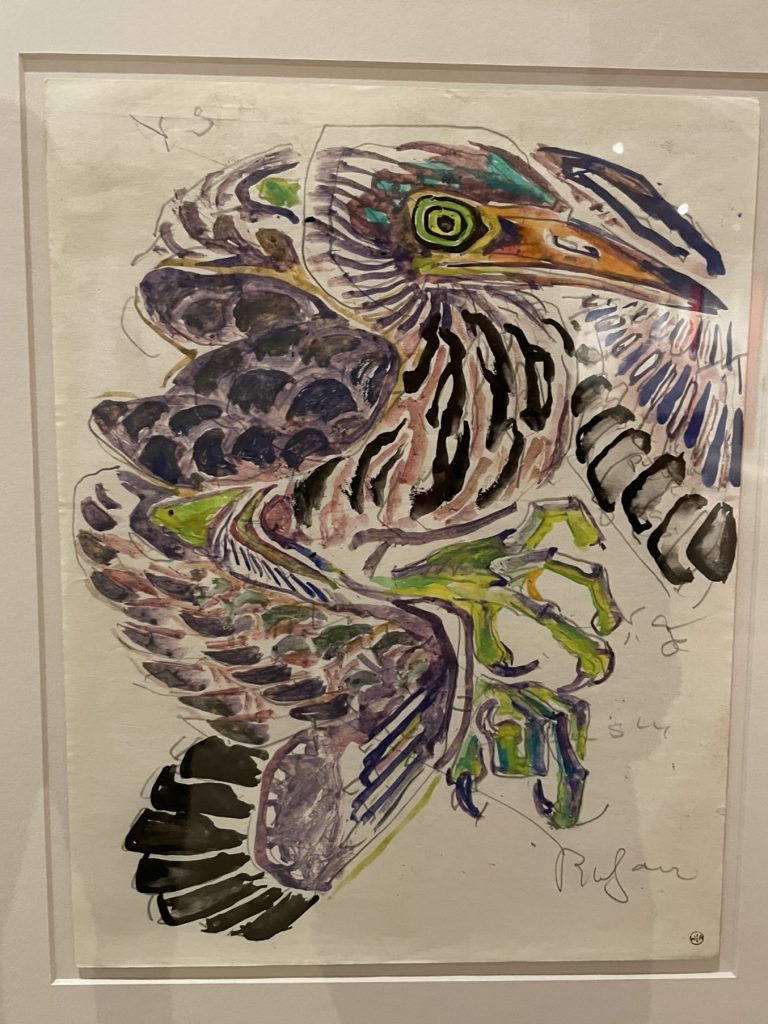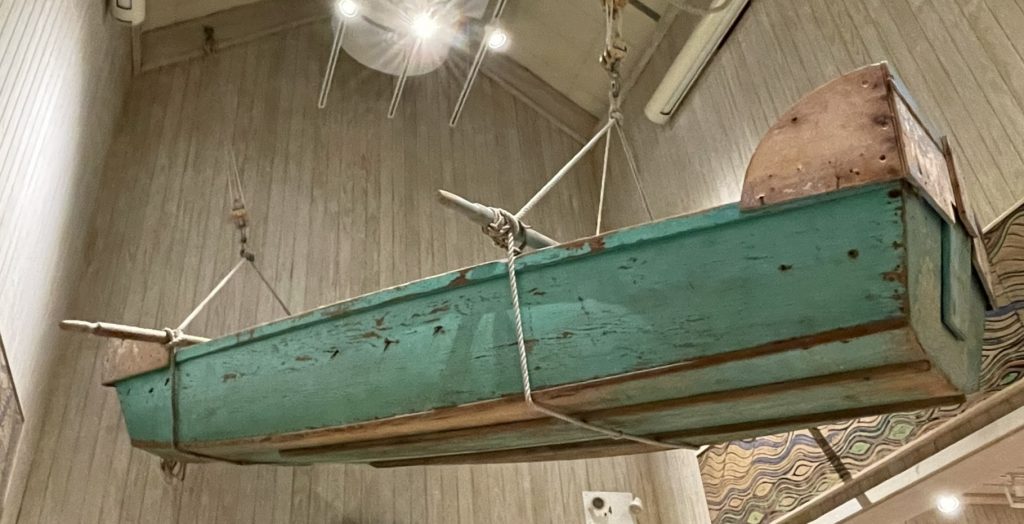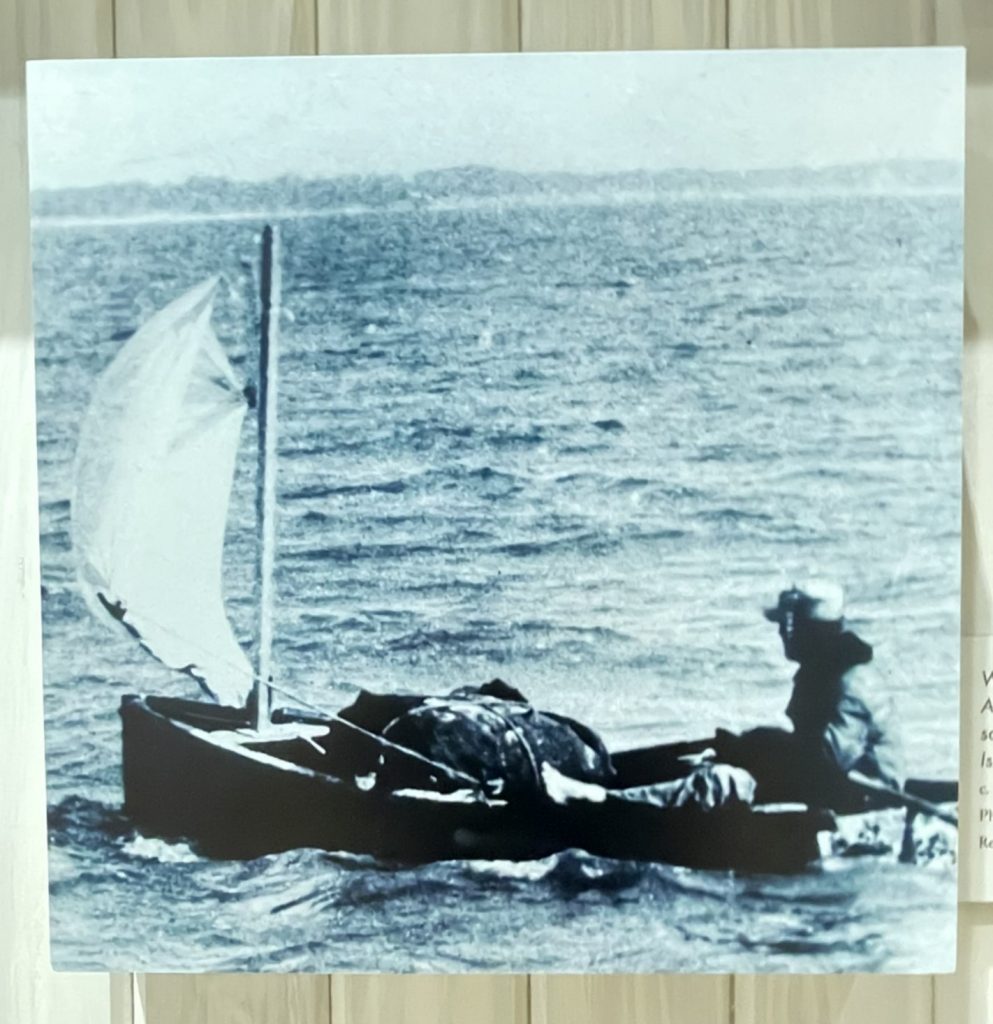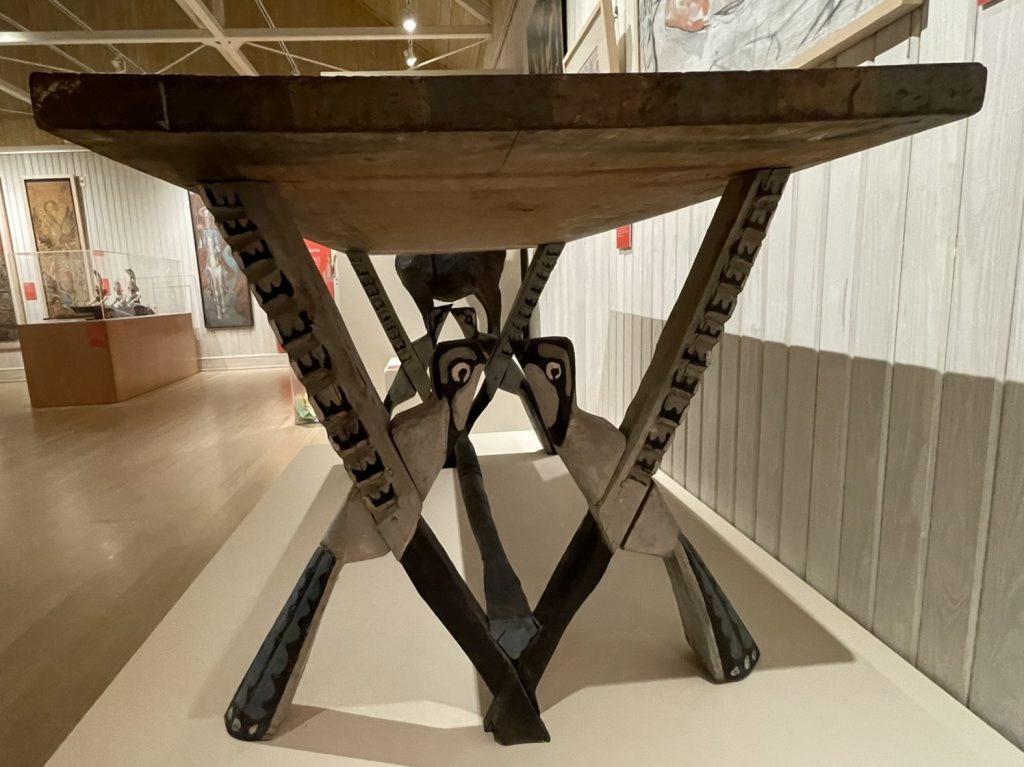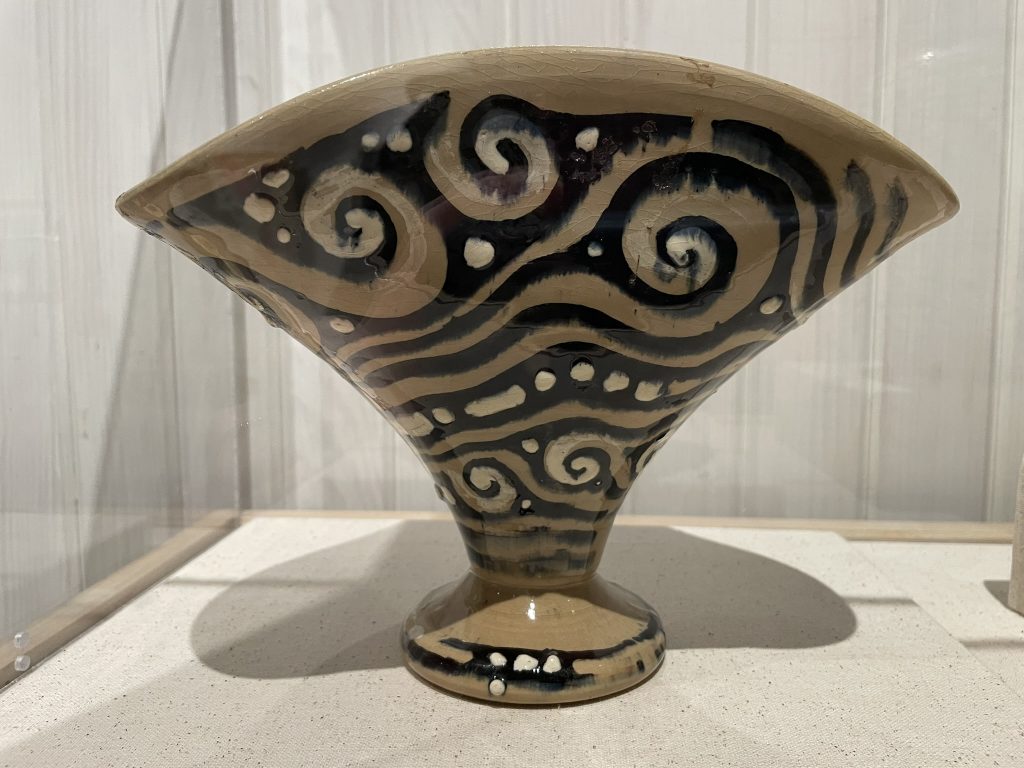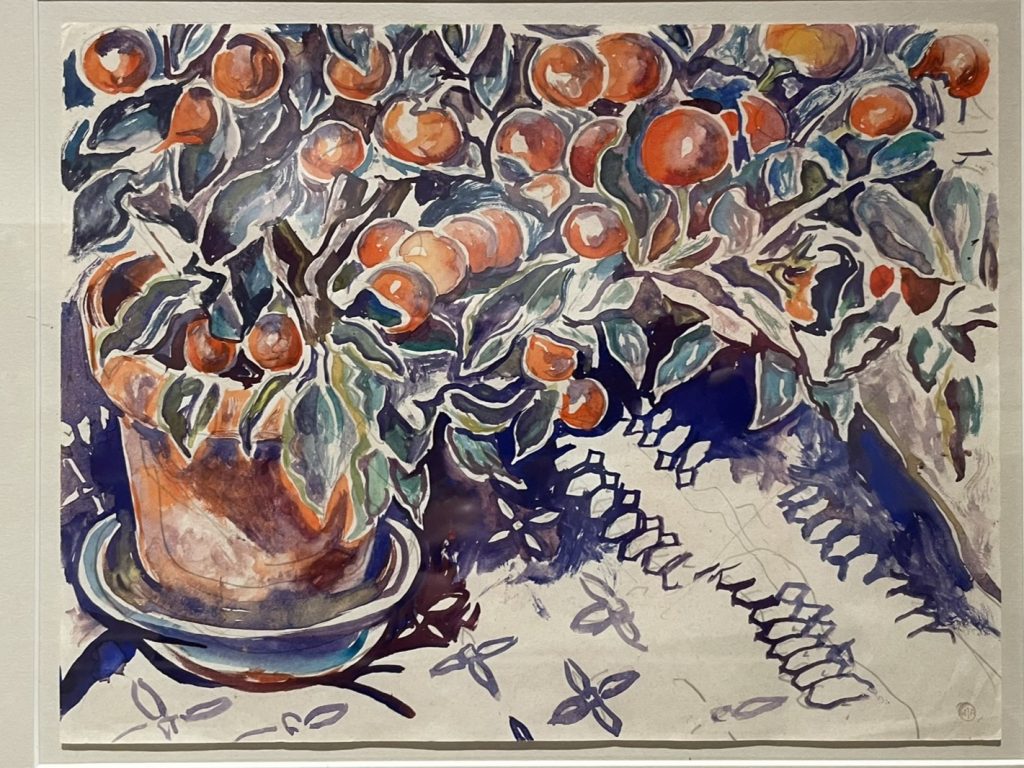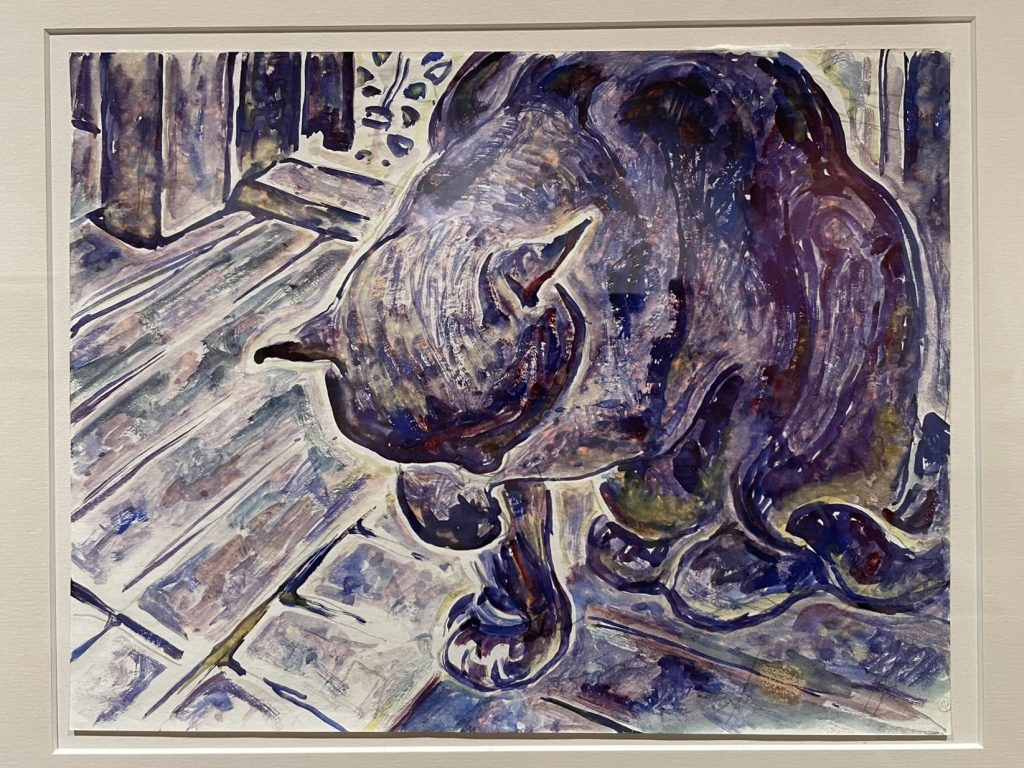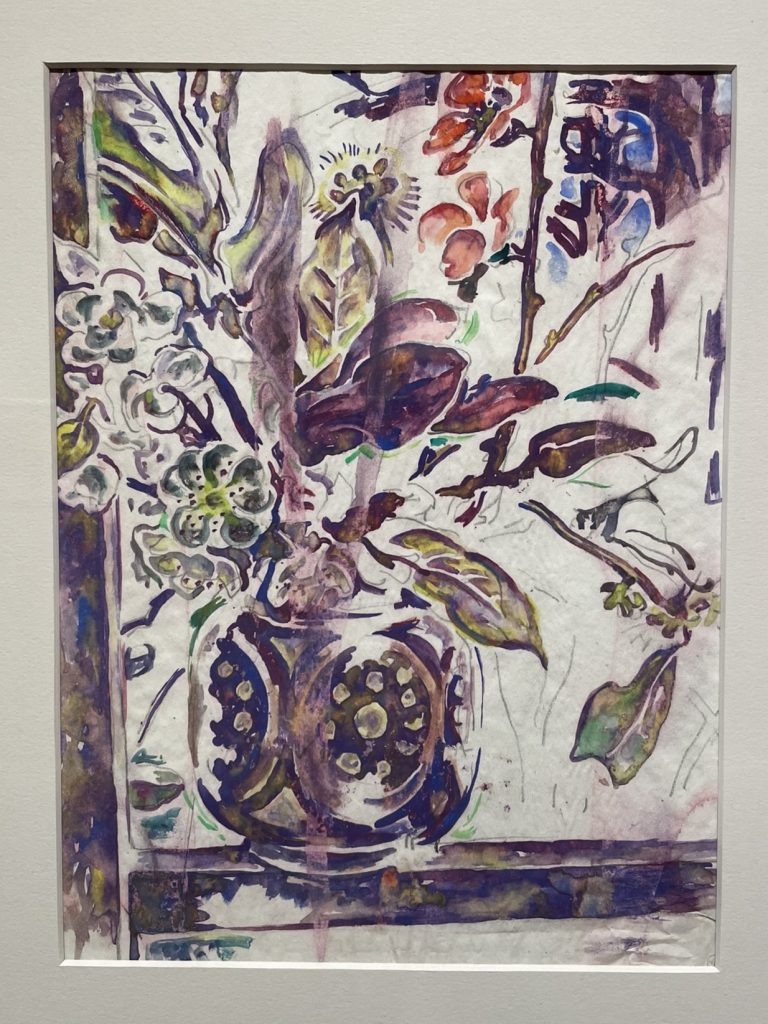
The Walter Anderson Museum of Art is another art museum we visited where we had never heard of the artist but thought “why not?” It turned out to be lovely.
Walter Inglis Anderson (1903-1965) fits the “tortured artist” mold, and is another artist whose craft crossed multiple mediums: painting, drawing, ceramics, pottery, woodwork, linoleum block printing, etc.
He knew from a young age that art was his destiny, studying at the New York School of Fine and Applied Art and the Pennsylvania Academy of the Fine Arts.
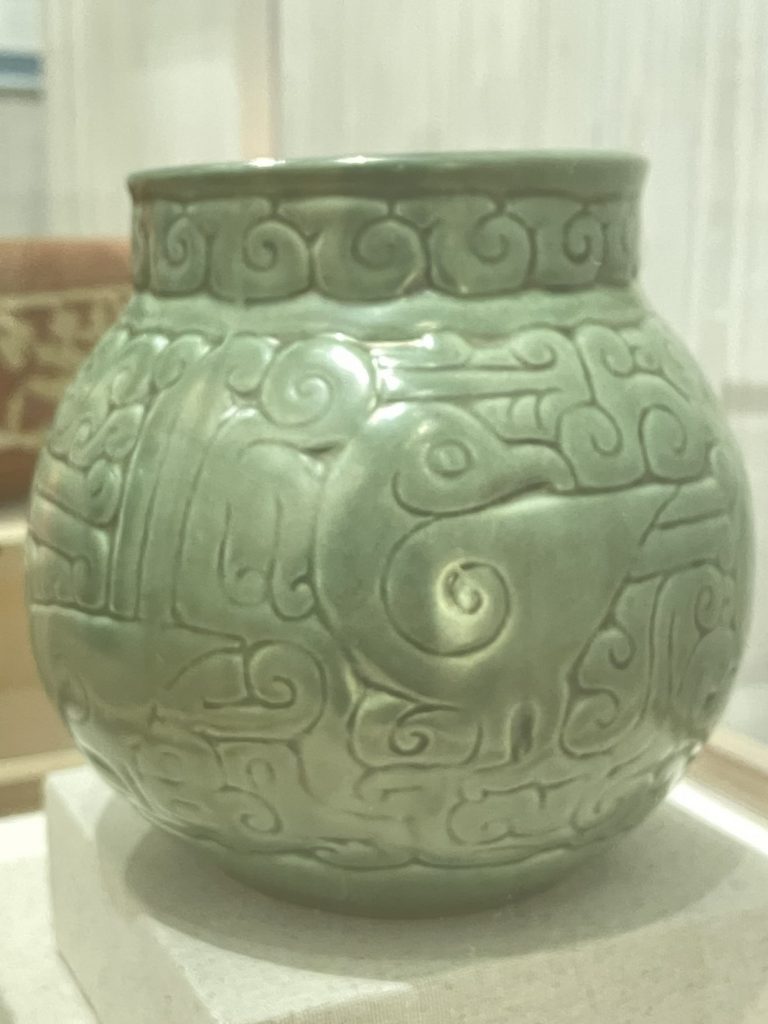
As a young man and continuing throughout his life, he worked as a designer at his brother Peter’s Shearwater Pottery Factory. He married and started a family, but stress from trying to eke out a living as an artist during the depression, the death of his father, and bouts of malaria combined to lead to a breakdown in 1937.
Within a few years he separated from his wife and family, though still lived on the same property. He became increasingly reclusive, rowing 12 miles to Horn Island where he lived very primitively but was artistically fulfilled. He kept vivid journals (90 of them just for Horn Island!) and painted radiant watercolors of coastal birds, plants, animals and landscapes.
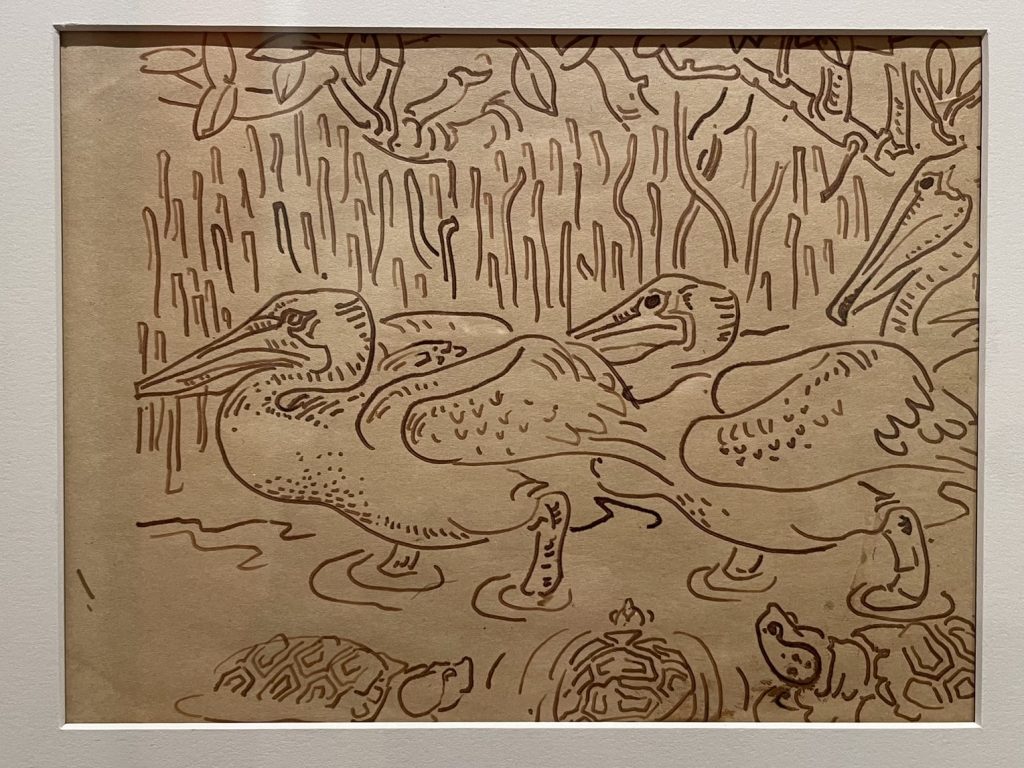
Living on Horn Island was not easy. He survived being bitten by a water moccasin (locals joked that Anderson was so tough that the snake died), and the artist didn’t make it easy on himself by setting out to experience nature in all of its stages, and tied himself to a tree so that he could withstand hurricane-force winds in one of the many storms that thrashed the island! He was once gifted an engine for his skiff, but on his first trip with it, halfway across the 12-mile journey to Horn Island, he detached it and let it sink to the bottom of the Mississippi Sound.
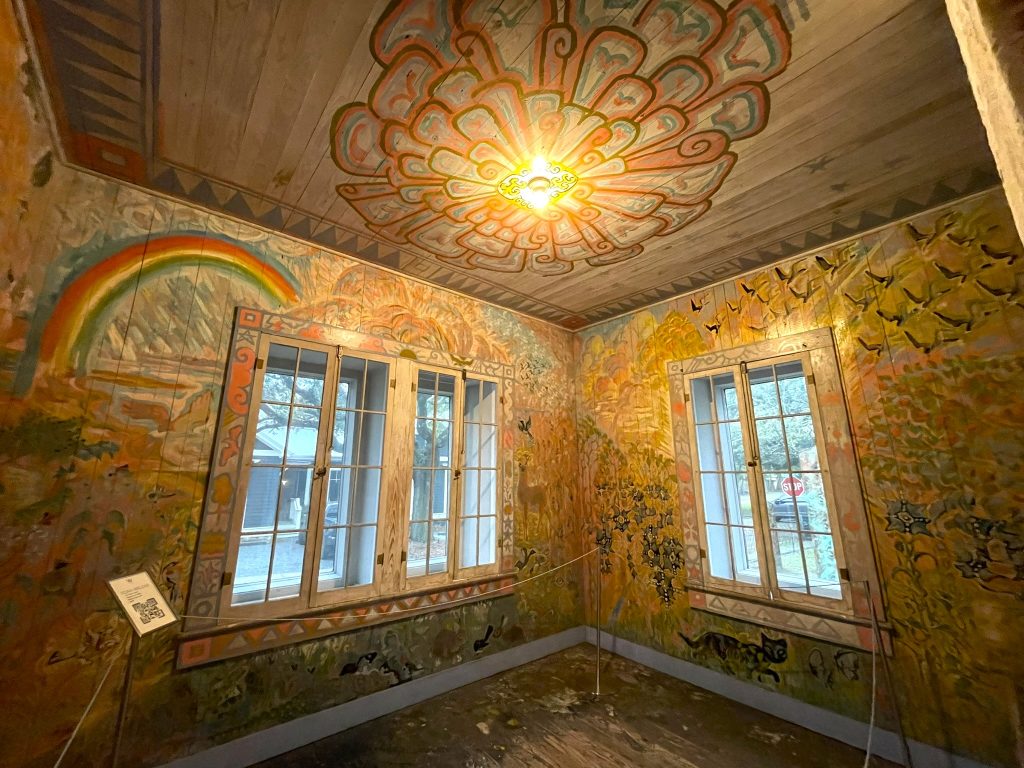
After his death, his family entered his cottage for the first time, having previously been forbidden to do so. They were astounded to discover boxes of artwork, along with murals covering the floors and ceilings. The cottage room was moved and is now part of the exhibit at the museum.
The museum is located in Ocean Springs, Mississippi, and though the organization to preserve Anderson’s work began in 1974, it took until 1991 until the museum was dedicated. It is attached to the Ocean Springs Community Center, which has 3,000 square feet of Anderson murals on its walls (painted in 1934 as part of the Public Works of Art Project and for which the artist received $1 in payment). Unfortunately, the building was closed for an event and we could only look in the windows for a glimpse.
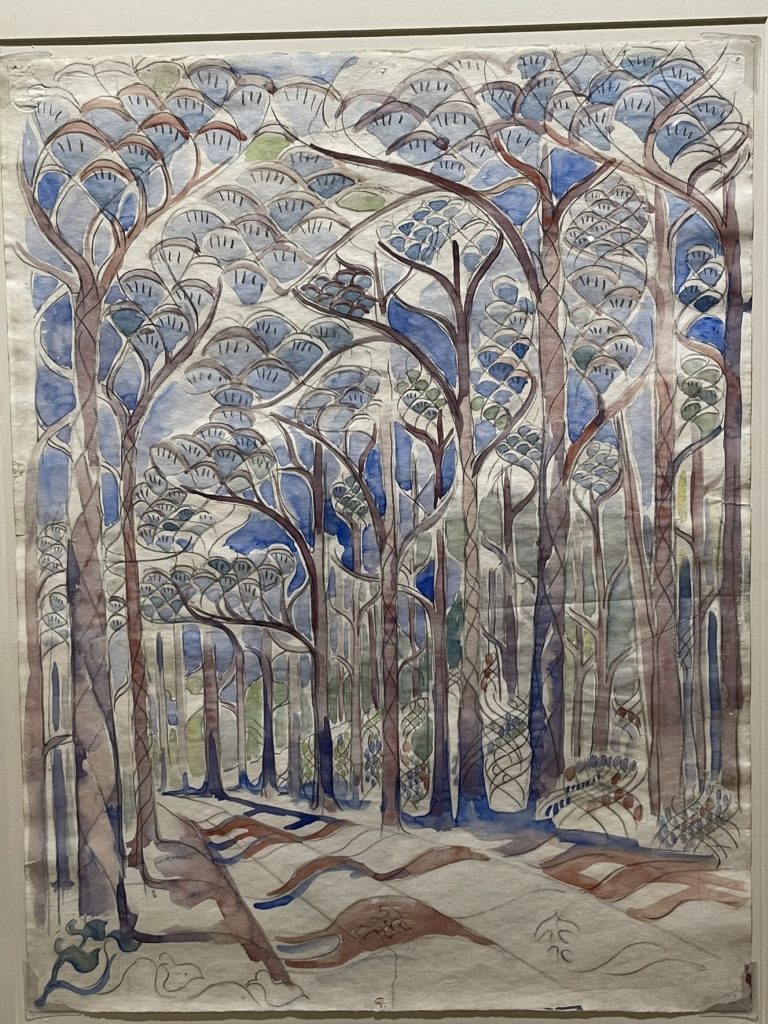
The family kept a private collection of Anderson’s work, which was severely destroyed when Hurricane Katrina struck in 2005. Water penetrated the building and wind swept many items away.
An extensive effort was made to recover and restore items, but you can imagine what that kind of exposure would do to artwork — truly devastating.
The cover photo to this post is Coots and Waves, 1960.
